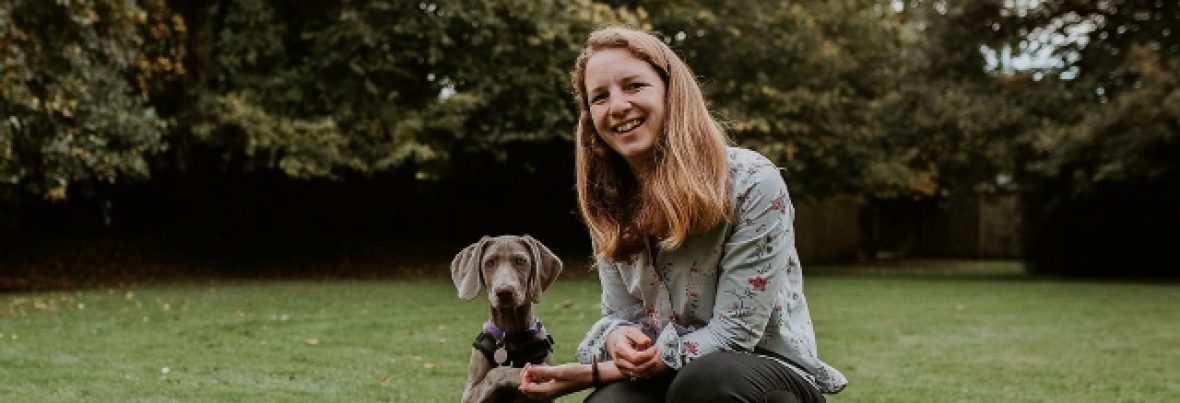
In my household, as in many others, today is met with a mixture of trepidation and excitement, the kids are back to school! Suddenly the house is quiet and peaceful, and it’s possible to concentrate on tasks uninterrupted……
This change in routine doesn’t go unnoticed by your furry canine family member either; dogs are very attuned to household comings and goings, and quickly learn all our habits especially those that may indicate a walk, food or play is on the cards!
However changes in routine, whether due to the academic year, a period of ill health necessitating time at home, parental leave on the arrival of a new baby or any other reason, can be hard for dogs to adjust to. It is sadly a common problem that once things go back to ‘normal’ that our canine companions struggle to cope with the reduction in closeness. It can be hard for us as owners to understand why, having spent the first 5 years of their life being able to manage on their own for four hours a day for example, they now are vocal or destructive when left! It can be immensely frustrating, and can seem as though they are being simply naughty or difficult, however these behaviours are driven by distress.
Dogs are wonderful companions due to the unique bond that they form with humans. Their emotional dependence on us make them highly rewarding pets to have and means that they will choose to spend time with us, are eager to please (most of the time!) and can be a real source of comfort. However this can be a double edged sword, and the very dependence that makes them such a rewarding animal to live with, can leave them struggling when on their own.
Some individuals quickly become accustomed to periods of closeness, such as the school holidays, when our routines are altered and the house is full of people coming and going with plenty of outings and interactions. They don’t realise that this is a temporary state of affairs, and that things will revert back all too soon.
This is when you can run into separation problems. Not all dogs display their distress in the same way, some will be very vocal, barking and/or howling, which is often reported to you by neighbours…. Others may be destructive, chewing on items of your clothing, or furniture, and some dogs may toilet indoors despite being reliably housetrained. Some may simply be very restless and this last group of dogs can easily go unnoticed as there is nothing to show for it. It is only when a video recording is made remotely that you can see their continuous pacing and restlessness.
It is very upsetting to find that your pet is struggling to cope, but there are some simple steps that you can take to help them adjust. The first thing to do is to ensure that your dog hasn’t developed a medical condition which may be making them less resilient. If you have any concerns regarding the general health of your dog, then your vets should be the first port of call. Issues such as joint pain, a tummy upset or itchy skin can all be much harder to cope with when they’re on their own and so can lead to signs of separation distress.
If your dog seems otherwise well then my advice would be to:
– Never tell your dog off when you return to find destruction/soiling. It can be very frustrating to discover the scene of devastation but try to remain as calm and collected as possible! Fear of being told off by the person they are so desperate to see, creates increased anxiety and confusion in dogs as they are not only distressed by your absence but also worried about your return, as they fear they may be punished.
– Ensure your dog is well fed and exercised before you leave. This will make them more likely to relax whilst your away, so try to give them a really good session of off lead exercise before you go.
– Give them a puzzle treat as you leave the house. Toys such as the Classic Kong, or K9 Connectables toys are great for filling with food such as peanut butter or squeezy cheese and biscuits. This not only gives them something enjoyable to do when you’re out but means that you leaving becomes more of a positive thing in their mind.
– Remove triggers such as the post being delivered or the sound of your voice on the answerphone. Some dogs are fine until something increases their arousal and then it is hard to calm back down. Post deliveries are a common trigger and so consider getting a post box away from the front door so that your dog isn’t disturbed. The sound of your voice on the answerphone can also disturb your dog so if possible silence it so that your dog can’t hear your voice.
– Ignore your dog for 20 minutes before you leave to make the contrast between you being home and then away less marked. Try not to have elaborate farewell partings, keep it brief and to the point.
– Don’t ignore your dog on your return but wait for them to have all four feet on the floor before giving them a calm greeting!
If your dog is very distressed, or if you have tried the above suggestions but there has been no improvement then seek professional advice. Separation problems can have a huge impact on a dog’s wellbeing, and helping them to cope with time alone improves things for everyone!

